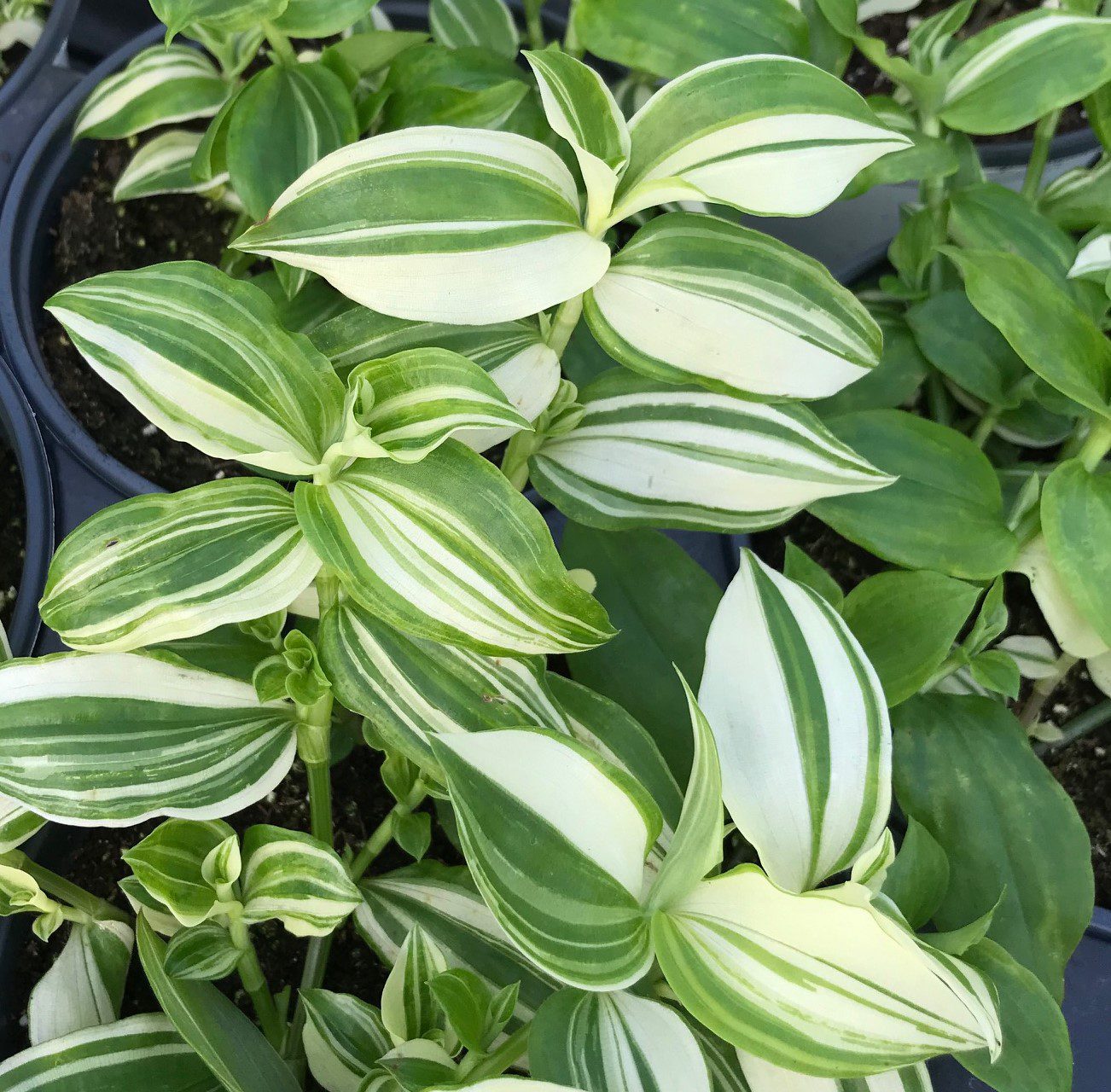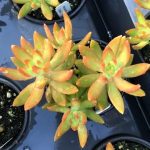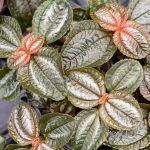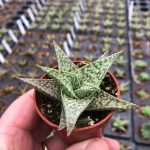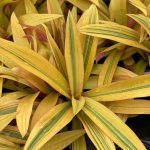Tradescantia zebrina, Wandering Jew Green & White
$8.99
Discount per quantity
| Quantity | 3 - 8 | 9 - 14 | 15+ |
|---|---|---|---|
| Price | $8.72 | $8.45 | $8.09 |
| % Discount | 3% | 6% | 10% |
Description
Wandering Jew Green & White – The Lively Trailing Beauty for Home and Garden
There’s something magical about a plant that seems to move with life. A plant that can spill gracefully over the edge of a basket or crawl along a windowsill with energy and charm. Tradescantia zebrina ‘Green & White,’ often called Wandering Jew Green & White, is one of those plants. It’s bold. It’s forgiving. It’s full of character. And once you bring it home, it rarely goes unnoticed.
This tropical trailing wonder has been loved for generations, yet it feels just as fresh in today’s homes and gardens. Whether you’re filling a sunny window, brightening up a shaded corner outside, or creating a living centerpiece, this plant offers endless ways to play with color and form.
Let’s explore what makes Wandering Jew Green & White so special, how to care for it, and why it deserves a spot in your collection.
A Glimpse Into Its Origins
Wandering Jew Green & White belongs to the Tradescantia family, a group of hardy plants native to Central and South America. In the wild, you might see it creeping along the forest floor or tumbling from rocky ledges. Its natural instinct is to spread, which is part of its charm for home gardeners.
This particular variety, ‘Green & White,’ is a twist on the classic purple and silver Tradescantia zebrina. Instead of the deep purple streaks most people know, it features bold green and creamy white striping with a silvery wash across the leaf surface. Flip the leaf over, and you’ll notice a soft purple underside — a subtle surprise that adds depth to its look.
The Allure of Its Foliage
The first thing that draws people to Wandering Jew Green & White is its foliage. The leaves are narrow, pointed, and slightly fleshy. Each one is patterned with alternating stripes of bright green and crisp white, sometimes shimmering in the light as if brushed with silver.
The color combination is lively but not overwhelming. It pairs beautifully with other plants — deep green ferns, golden pothos, or even vibrant flowering annuals. And when placed in a hanging basket, its cascading stems create a curtain of texture that sways gently with the breeze.
Growth Habit and Personality
Fast growth is one of this plant’s defining traits. Give it the right conditions, and you’ll see vines stretching within weeks. Indoors, it can easily trail three feet or more. Outdoors, in frost-free regions, it can cover ground quickly, weaving between stones or filling garden beds as a living carpet.
Its trailing nature makes it perfect for:
-
Hanging baskets: The vines spill gracefully, creating a lush, full look.
-
Shelf accents: Allow stems to drape down bookshelves or window ledges.
-
Mixed containers: Combine it with upright plants for contrast in shape and habit.
-
Ground cover: In warm climates, it can form a soft mat that suppresses weeds.
Light Requirements: Finding the Sweet Spot
Tradescantia zebrina ‘Green & White’ loves light, but not the harsh midday sun. Bright, indirect light is ideal. A windowsill with filtered sunlight or a spot near sheer curtains works perfectly indoors. Outdoors, partial shade is best — morning sun and afternoon shade keep its colors vivid without scorching the leaves.
Too little light can cause the white variegation to fade, leaving leaves mostly green. Too much direct sun, on the other hand, can lead to crispy edges or washed-out color. If you see these changes, simply move the plant to a gentler spot and watch it recover.
Watering: The Balanced Approach
This plant enjoys consistent moisture but hates sitting in soggy soil. A good rule: water when the top inch of soil feels dry. In warm months, that might mean watering once or twice a week indoors. During cooler months, cut back as growth slows.
Always use a pot with drainage holes to prevent root rot. If growing outdoors, make sure garden beds or containers drain well after rain.
Pro tip: Wandering Jew Green & White tolerates short dry spells better than overwatering. When in doubt, err slightly on the dry side.
Soil Preferences
A light, well-draining mix is key. Standard potting soil with a bit of perlite or coarse sand works beautifully. If planting outdoors, amend heavy soil with compost or fine bark to improve drainage.
Because Tradescantia grows quickly, it benefits from soil that holds enough moisture to support fast root development but doesn’t stay wet for long periods.
Feeding for Full, Lush Growth
During spring and summer, feed every 4–6 weeks with a balanced liquid fertilizer diluted to half strength. This supports vigorous trailing and keeps foliage bright. In fall and winter, feeding isn’t necessary, as the plant naturally slows down.
If you prefer organic options, compost tea or fish emulsion works just as well and keeps soil biology healthy.
Temperature and Humidity
Wandering Jew Green & White is happiest in warm, humid conditions. Temperatures between 65°F and 80°F are ideal. It can handle brief dips to around 50°F but suffers if exposed to frost.
Humidity is equally important. In dry homes, especially in winter, consider misting the plant occasionally or placing it near a humidifier. You’ll notice leaves stay fresher and resist browning at the tips when humidity is adequate.
Pruning and Shaping
Because it grows so quickly, regular pruning helps maintain a tidy shape. Pinch back the tips of stems every few weeks to encourage branching. This makes the plant look fuller and prevents long, bare stretches of vine.
Don’t be afraid to cut it back hard if it becomes too leggy — Tradescantia responds well to a strong trim and quickly pushes out new growth.
Propagation: Sharing the Beauty
One of the joys of this plant is how easy it is to propagate. Snip a 4–6 inch cutting, remove the lower leaves, and place it in water or moist soil. Roots develop in a week or two, and soon you’ll have a new plant to pot up or share with friends.
This ease of propagation also makes it perfect for filling large hanging baskets or containers. Start with several cuttings in one pot, and you’ll have a dense, overflowing display in no time.
Pests and Problems
Tradescantia zebrina ‘Green & White’ is generally trouble-free, but keep an eye out for:
-
Spider mites: These tiny pests thrive in dry air. Look for webbing or speckled leaves. Increase humidity and wipe leaves if they appear.
-
Aphids and mealybugs: Occasionally appear on new growth. A quick rinse or insecticidal soap usually solves the problem.
-
Root rot: Caused by overwatering or poor drainage. Always let excess water drain away.
Regular inspection and prompt action keep the plant healthy and vibrant.
Indoor Styling Ideas
The bright stripes of Wandering Jew Green & White bring instant life to interiors. Try these styling approaches:
-
Hanging baskets in kitchens or sunrooms for a lively splash of greenery.
-
Trailing shelves or plant ladders where vines cascade dramatically downward.
-
Terrariums or glass cloches for a compact, humid display with other tropicals.
-
Mixed arrangements with succulents or ferns for contrasting textures and colors.
Its ability to complement so many styles — boho, modern, farmhouse — makes it a versatile design element.
Outdoor Uses
In warm climates (zones 9–11), this plant can be grown outdoors year-round. It makes a wonderful ground cover under trees or in shaded garden beds where grass struggles. It also pairs beautifully with tropical companions like caladiums, coleus, or impatiens.
In cooler regions, treat it as an annual or move containers indoors before frost. It adapts easily to indoor life, often thriving even better after a summer outdoors.
Cultural and Community Appeal
Part of this plant’s charm lies in its ability to connect people. It’s one of the most shared houseplants among friends and neighbors. A single cutting often passes from one household to another, creating stories and memories along the way.
Many gardeners also appreciate its role in pollinator gardens when grown outdoors. While its tiny flowers aren’t flashy, they attract small insects that add life to the garden ecosystem.
Why We Love It
Wandering Jew Green & White isn’t just about looks. It’s about ease, adaptability, and the joy it brings. Few plants reward minimal care with such bold, instant impact. It thrives with beginners but still earns a spot in the collections of seasoned plant lovers.
Its ability to brighten dull corners, trail gracefully, and multiply effortlessly makes it a plant worth knowing — and growing.
Bringing It Into Your Space
If you’ve been searching for a plant that feels alive and interactive, this is it. Place it somewhere you’ll see it every day — on a sunny windowsill, above a busy kitchen counter, or hanging near your front door. Watch how it grows, responds, and softens your space. Over time, you’ll notice not just the plant changing, but your space feeling more welcoming and vibrant too.
A Plant That Travels With You
Wandering Jew Green & White carries a sense of movement. It grows, trails, and flows — and in many ways, it invites us to grow alongside it. When we pinch it back, root new cuttings, and watch those cuttings flourish, we’re reminded of nature’s resilience and generosity.
This is more than just a decorative plant. It’s a living companion that thrives on sharing. Once you bring one home, you might find yourself passing along cuttings to friends, starting new baskets each season, and discovering fresh ways to enjoy its lively spirit.
A Living Ribbon of Color
Tradescantia zebrina ‘Green & White’ brings something special wherever it grows. It’s humble yet striking, quick to please yet full of surprises. It trails like a ribbon, shines like polished silver, and asks for so little in return.
When we choose plants like this, we invite vibrancy into our daily lives. We connect to nature’s rhythms. And we discover how even the simplest greenery can transform our spaces — and our moods — one cascading stem at a time.
Additional information
| Weight | N/A |
|---|---|
| Options | Unrooted Cutting – 9 Count, Starter Plug – 3 count, 4 in. (16.9 fl. oz.) Pot |

